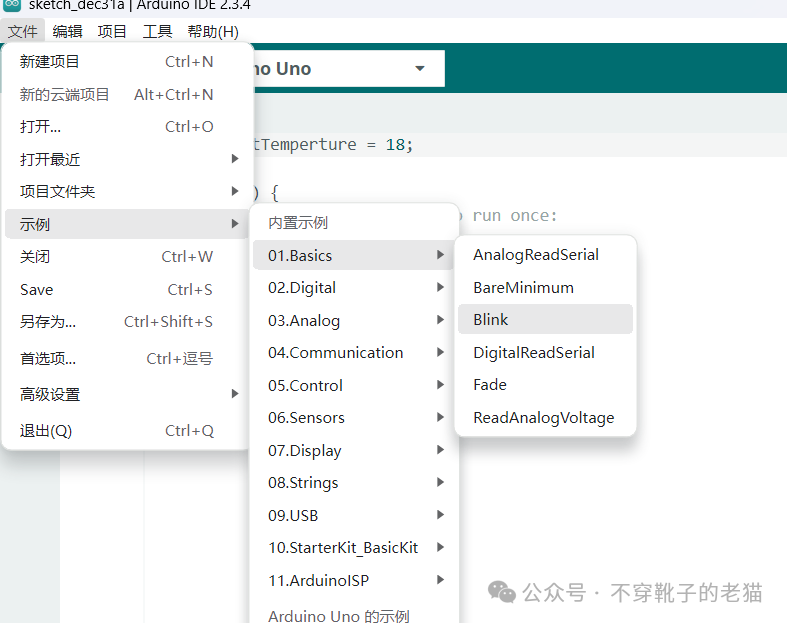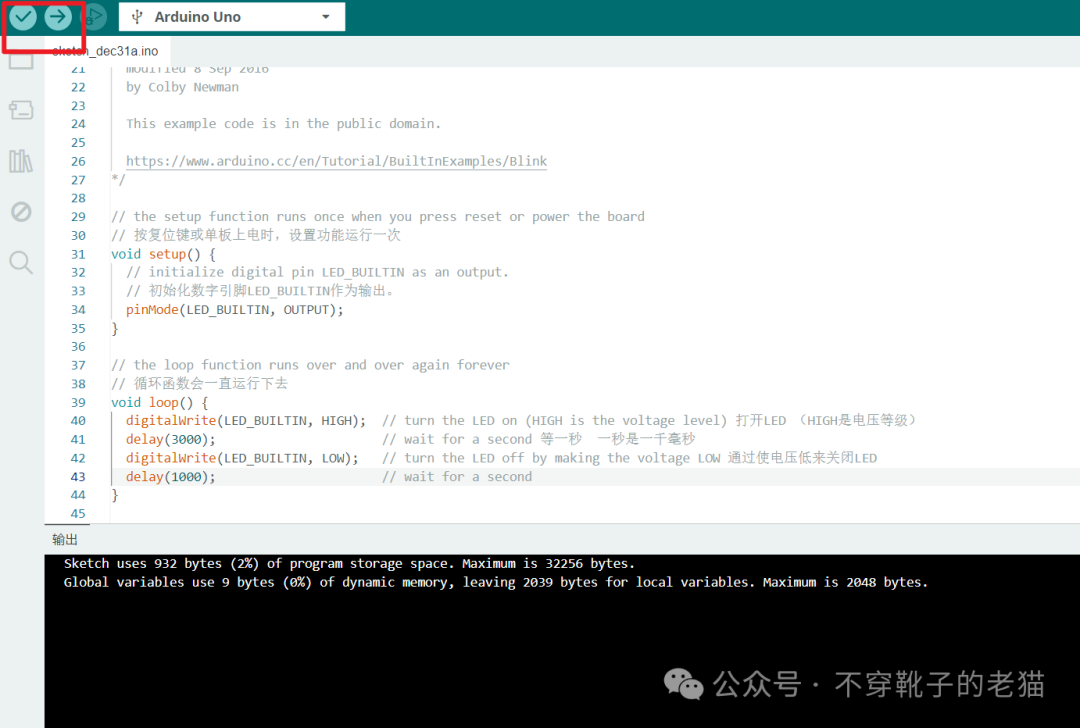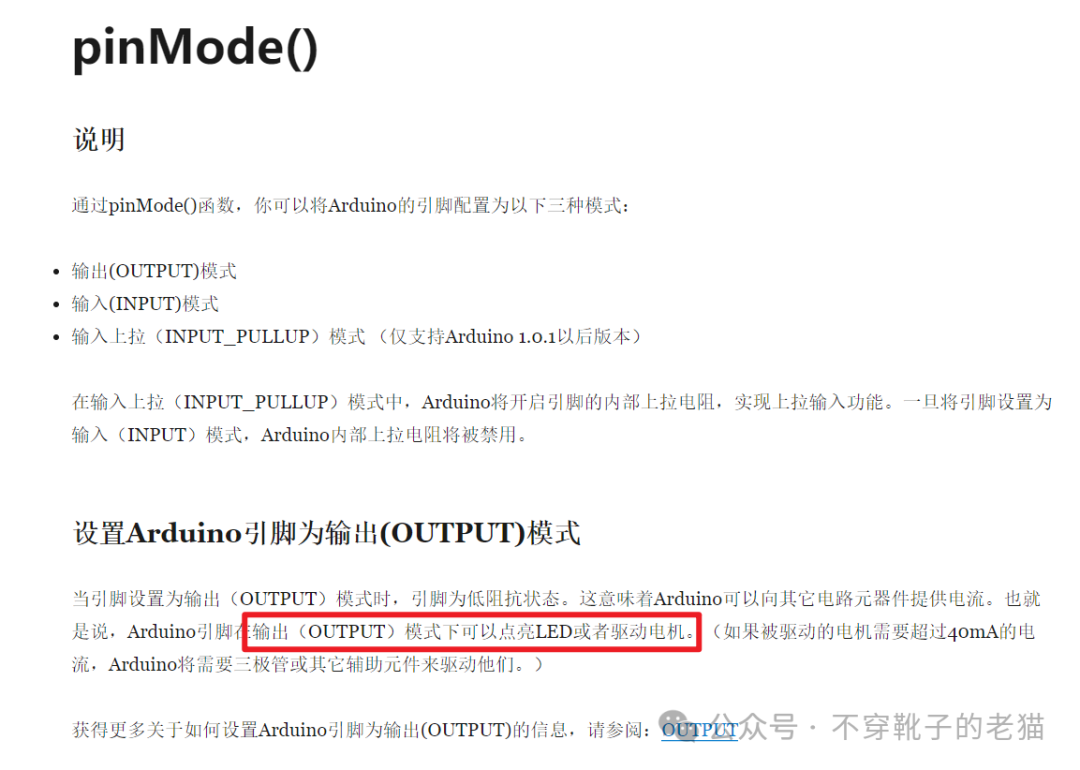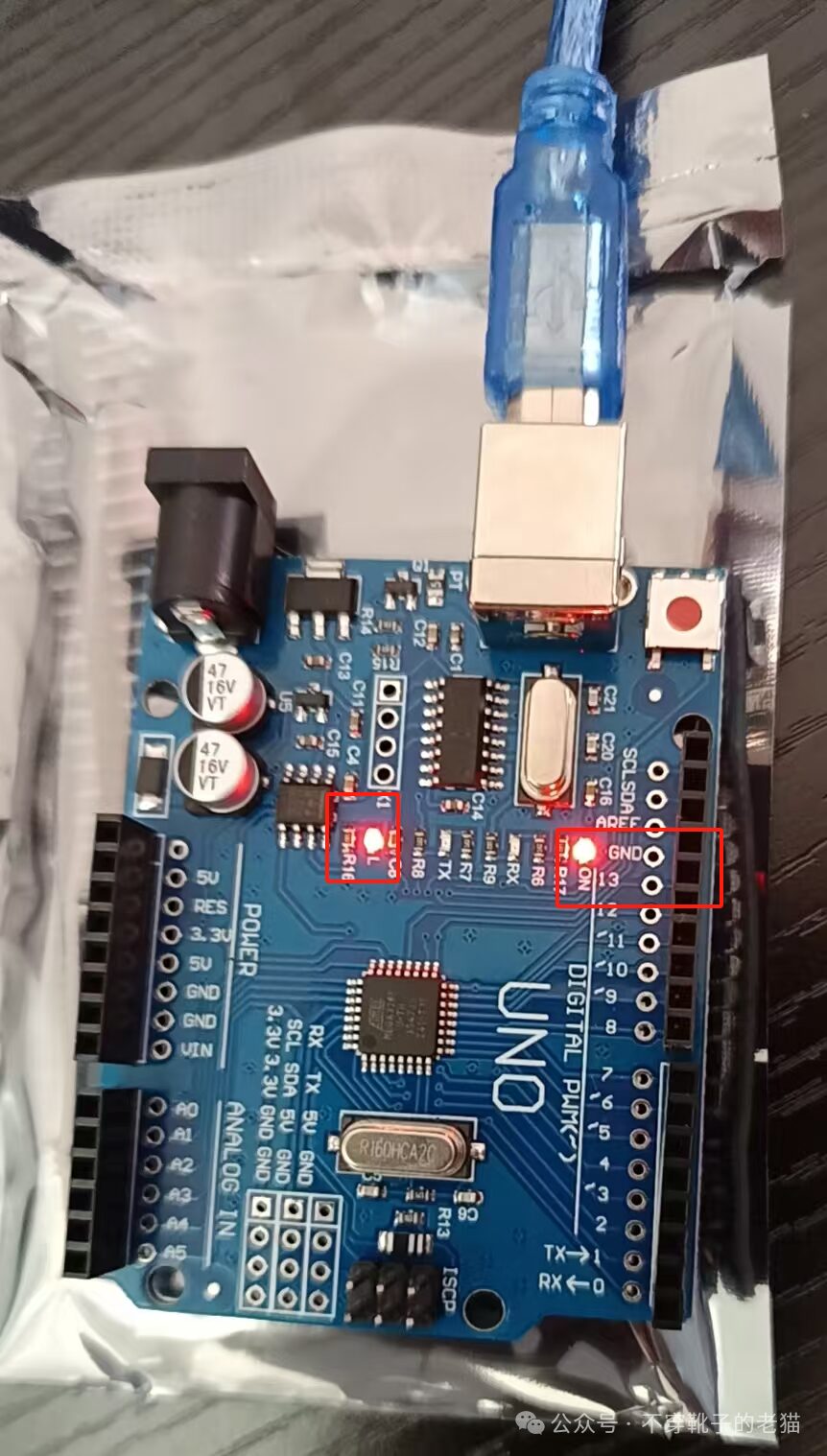/ Basics of Arduino Programming /
Using C++ programming, basic reference to C++ syntax.
Each statement ends with a semicolon, comments use //, uppercase words are special characters and should not be misused. Functions are enclosed in {}.
void setup() { // put your setup code here, to run once: // This code runs once at the start code doing something; // Each line of code ends with a semicolon
}
void loop() { // put your main code here, to run repeatedly: // This code runs in a loop
}
Online learning resources for C++
https://www.bilibili.com/video/BV1et411b73Z
Arduino statement function library reference
http://www.taichi-maker.com/homepage/reference-index/arduino-code-reference/
https://docs.arduino.cc/language-reference/
1
Example Program Blink
1.1
Turn on the LED

/* Blink
Turns an LED on for one second, then off for one second, repeatedly. Most Arduinos have an on-board LED you can control. On the UNO, MEGA and ZERO it is attached to digital pin 13, on MKR1000 on pin 6. LED_BUILTIN is set to the correct LED pin independent of which board is used. If you want to know what pin the on-board LED is connected to on your Arduino model, check the Technical Specs of your board at: https://www.arduino.cc/en/Main/Products
modified 8 May 2014 by Scott Fitzgerald modified 2 Sep 2016 by Arturo Guadalupi modified 8 Sep 2016 by Colby Newman
This example code is in the public domain.
https://www.arduino.cc/en/Tutorial/BuiltInExamples/Blink*/
// the setup function runs once when you press reset or power the board
void setup() { // initialize digital pin LED_BUILTIN as an output. pinMode(LED_BUILTIN, OUTPUT);}
// the loop function runs over and over again forever
void loop() { digitalWrite(LED_BUILTIN, HIGH); // turn the LED on (HIGH is the voltage level) delay(1000); // wait for a second digitalWrite(LED_BUILTIN, LOW); // turn the LED off by making the voltage LOW delay(1000); // wait for a second}
Click upload after compiling

1.2
Try modifying variables
int delaytime = 3000;
void setup() { // initialize digital pin LED_BUILTIN as an output. pinMode(LED_BUILTIN, OUTPUT);}
// the loop function runs over and over again forever
void loop() { delaytime = delaytime + 1000; digitalWrite(LED_BUILTIN, HIGH); delay(3000); digitalWrite(LED_BUILTIN, LOW); delay(delaytime);}
1.3
pinMode function and digitalWrite function


So the original code can also be written as
int delaytime = 100;
int LED_pin = 13; // On the UNO, MEGA and ZERO it is attached to digital pin 13
void setup() { // initialize digital pin LED_BUILTIN as an output. pinMode(LED_pin, OUTPUT);}
// the loop function runs over and over again forever
void loop() { digitalWrite(LED_pin, HIGH); delay(delaytime); digitalWrite(LED_pin, LOW); delay(delaytime);}